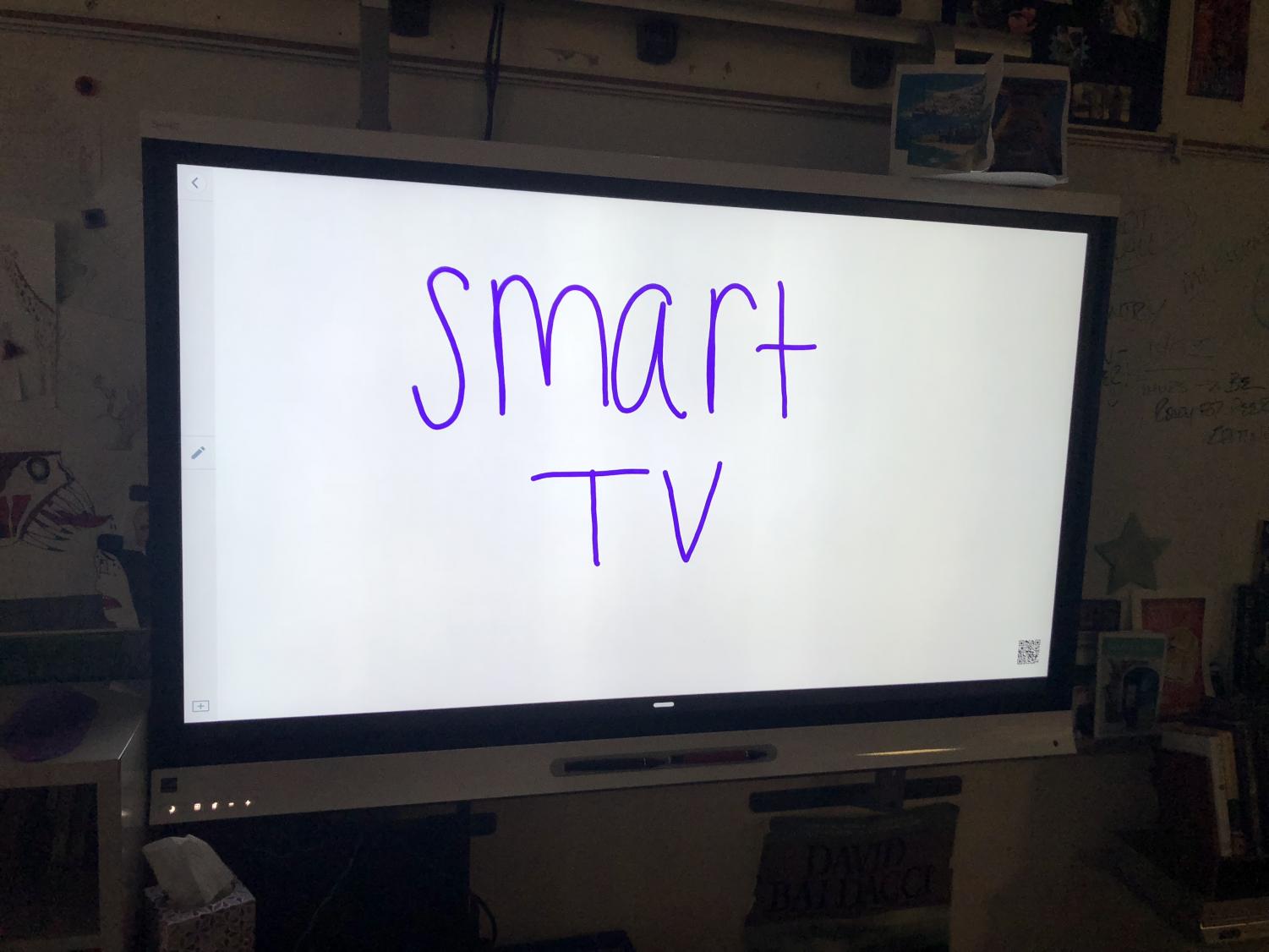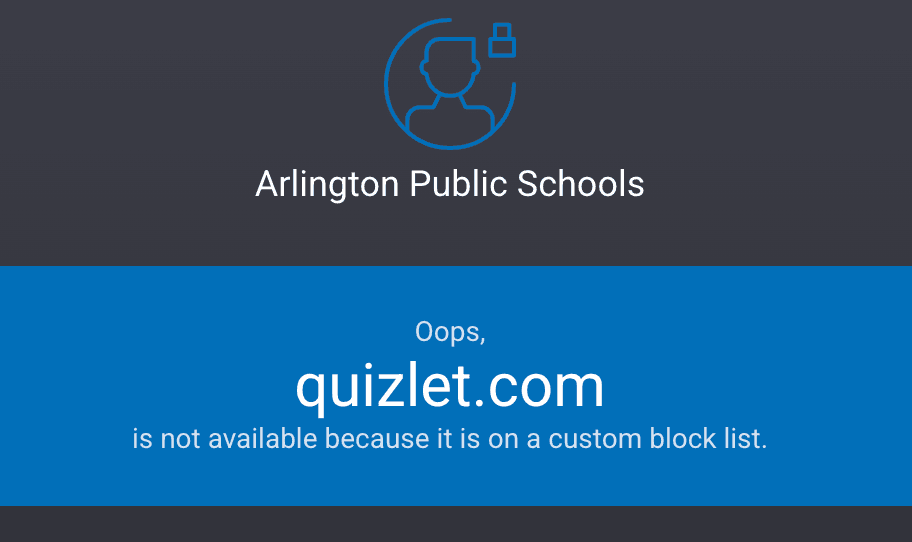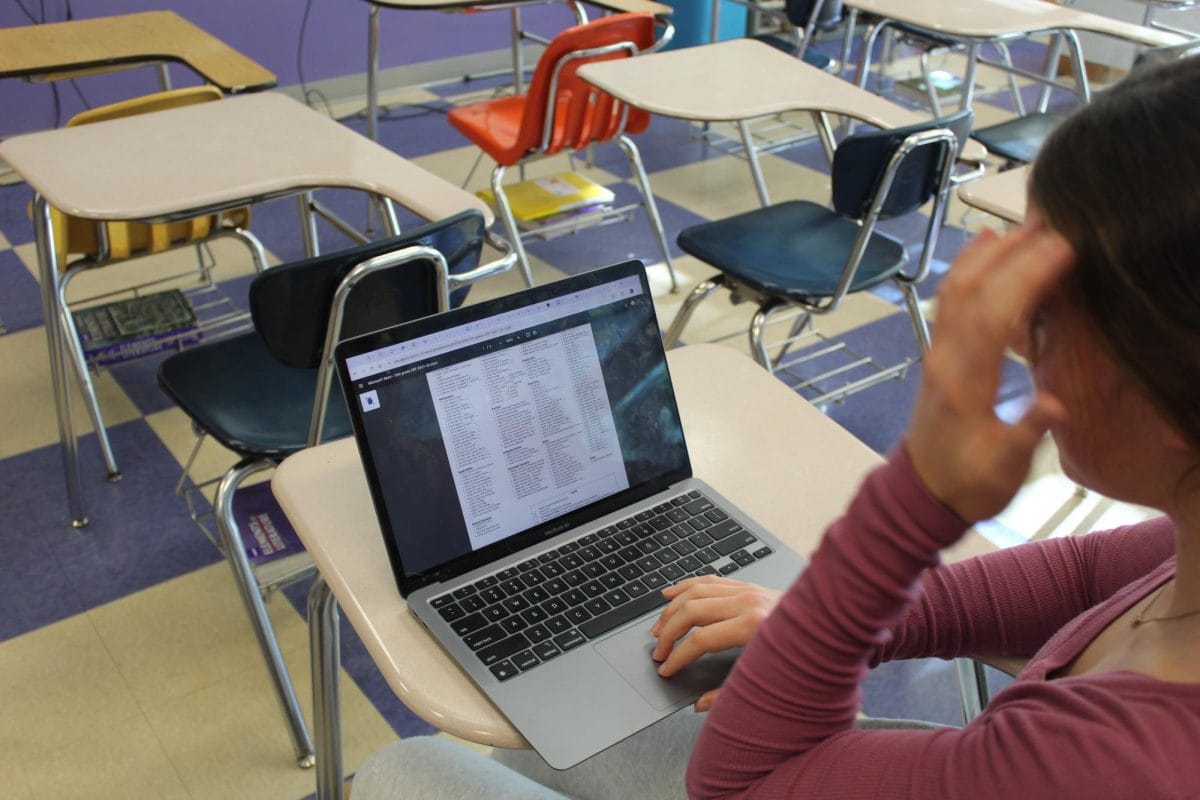Beginning in the 2016-17 school year, Arlington Public Schools (APS) has been working towards a goal to put SMART Panels in all high school classrooms throughout the county. Made by SMART Technology, the Panels, which are essentially flat screen televisions enabled with interactive features such as a touch-screen and internet access, are replacing the SMART Boards that have previously occupied nearly every classroom within APS. As of the 2017-18 school year, Washington-Liberty High School is fully transitioned to SMART Panels with Yorktown, Wakefield and the Career Center set to be next in making the complete transition.
The shift by APS towards the Panels is indicative of a greater effort throughout the county to update technical hardware and software. Continued updates to pre-existing systems such as laptops and iPads that are used by students shows modernization to be a priority in how APS spends its money. Regarding the SMART Panels, Samuel Wightman, Yorktown High School’s Instructional Technology Coordinator (ITC), identifies the changes to newer versions of the same system to be a part of this shift.
“These panels allow for interaction, webconnection and a physical touch feature in a one platform system, meaning all of the extra wires and projectors are no longer needed. [The SMART Panels] are an overall upgrade from the older SMART Boards,” Wightman said.
For installing the Panels into the classrooms, Wightman must submit a request to APS, who then connect with a vendor of the SMART Panels, such as Alexandria-based Common Cabling. The vendor will then schedule an installation appointment in which a trained technician will remove the SMART Boards and connect the sleek, wireless Panel. Once removed, the SMART Boards are then taken to various places of need such as an APS elementary school or to be scrapped for parts required by other Boards.
Wightman, whose job as an ITC is primarily focused on aiding teachers in the integration of technology within the classrooms, recognizes that, once installed, each classroom will utilize the Panels in accordance with what the class being taught requires. For this reason, the adaptability in the function of the Panels is a key factor to its viability as an educational tool.
“Usage of the Panels depends on the class it occupies. If it is in a Film Studies class, students will be very engaged in what is being presented. In a Math classroom, there will be much more interactivity where students and teachers are physically working out and solving problems on the Panels. Regardless, the Panels can fulfill the various needs of the class,” Wightman said.
In the classroom, teachers have been made to acclimate to the new functions of the SMART Panels. Some teachers have encountered technical issues in Panel usage such as low sound levels and difficulty connecting computers to mirror onto the Panel’s screen. Still, teachers such as Rachel Sadauskas, who teaches English and Film Studies, are optimistic about the potential that a properly functioning Panel holds.
“It was difficult to enable all of the technology that I needed, but I can now use the Panel in a variety of ways. In my reading course, it is used for grammar and writing instruction. Students also have the ability to play presentations on it …. It has been a difficult transition, but now that the Panel is fully functional, it will hopefully enhance learning,” Sadauskas said.
Still, questions remain over the necessity of the Panel’s introduction. With each Panel having a retail price of around $5000, according to SMART Tech, teachers like Spanish teacher Margaret Johnson feel that the various bells and whistles of the technology do not compensate for its price tag as, at its core, the Panels have little difference from more traditional schooling methods.
“On the Panel, I have the option to do an internet search and there are many interesting features, but they do little to enhance instruction. The Panels could benefit teachers who really want to complete additional training to utilize all of the features, but overall I would not say that the Panels replaces a blackboard with chalk or a much cheaper projector onto the wall,” Johnson said.
In making decisions on what is needed to further the quality of education in the school system, APS must distinguish what is truly crucial to its classrooms from what is simply innovation for the sake of innovation. Having deemed the SMART Panels a needed addition to better student learning, APS must work towards their complete and proper installation and, in the future, continue to decipher the difference between superfluous investments and ones that are legitimately essential.













































